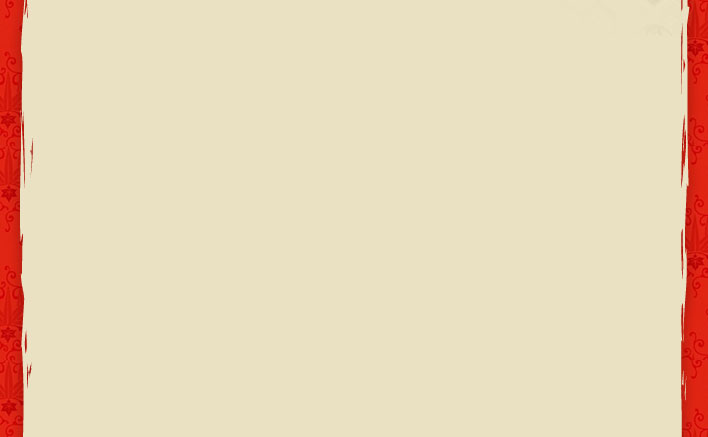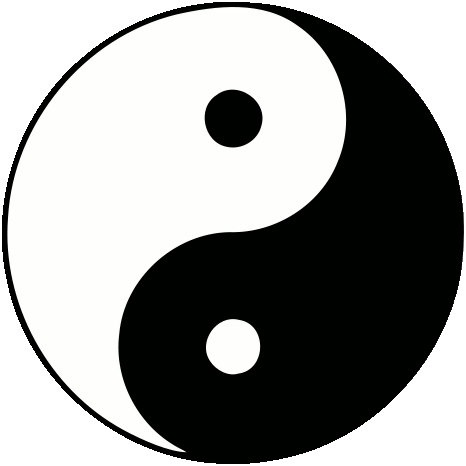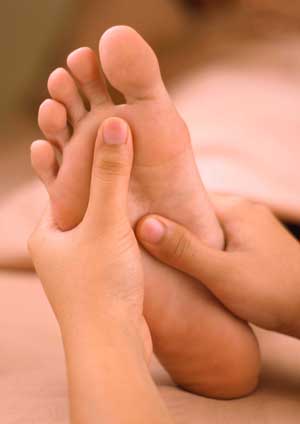



Benefits
Chinese massage is not intended to be an experience of pampering or relaxation. It is a form of deep tissue therapy that conveys the following benefits:
* speeding the healing of injuries and clearing bruises
* stimulating blood circulation and regulating the nervous system
* removing scar tissue
* easing emotional distress
* curing some conditions affecting the internal organs
* increasing flexibility in the joints and improving posture
* relieving chronic pain
* maintaining wellness and functioning as a form of preventive care
* improving athletic performance
* strengthening the body's resistance to disease
Other benefits include the fact that some forms of Chinese massage do not require extensive training and can be used at home.
Description
Theoretical Background
The techniques of Chinese massage are inseparable from the philosophical belief system that underlies traditional Chinese medicine. Chinese massage is holistic in its orientation, which means that massage is understood to affect the patient's entire being, not just his or her physical body.
Several concepts are important in understanding all the major forms of Chinese massage, including qi, jing luo, xue, and jin.
Qi, sometimes spelled chi or ki, is the basic life energy animating the universe as well as human beings. The word can be translated into English as "breath" or "air." Qi can be transferred or transmuted. In humans, the digestive tract extracts the qi from food, while the lungs extract it from the air. When these two forms of qi meet in the bloodstream, they form human qi, which then circulates throughout the body.
The meridians or channels (jing luo) are a network of energy pathways that link and balance the various organs. The meridians have four functions: to connect the internal organs with the exterior of the body, and connect the person to the environment and the universe; to harmonize the yin and yang principles within the body's organs and Five Substances; to distribute qi within the body; and to protect the body against external imbalances related to weather. When the jing luo are blocked so that qi and blood cannot circulate, the person experiences physical pain.
The acupoints (xue) are locations on the body where qi tends to collect and can be manipulated or redirected. They are connected to different body organs through the meridians.
The soft and connective tissues (jin) and the joints all affect the flow of qi along the meridians. Thus one function of Chinese massage is to relax the patient's jin.
In general, Chinese massage emphasizes movement and communication. The basic purpose of massage is to restore free movement to the patient's qi and blood. Chinese massage therapists use a range of techniques to accomplish this: they press, knuckle-roll, squeeze, knead, dig, drag, pluck, tweak, hammer, push, stretch, hammer, vibrate, knock, and even tread on the body with their feet. Massage accomplishes its purpose in three ways: it "jump-starts" the activity of qi and blood, it regulates their movement and disperses stagnation, and it removes external causes of blockage (cold and damp). Since Chinese practitioners regard massage as affecting all dimensions of the patient's being, they think of it as involving communication between the therapist's qi and the patient's qi. In Tui na massage, the patient is allowed or even encouraged to talk while the therapist is working. This practice often helps the patient to release stored-up feelings.
Tui Na Massage
Tui na massage takes its name from two Chinese words that mean "lift and press." It requires the controlled use of very deep but constantly moving pressure, repeated hundreds of times. The practitioner pushes hard with the ball of the thumb, then rubs lightly around the area being treated. A therapist using this form of massage might spend as much time on one of the patient's joints or limbs as a Western therapist would spend massaging the entire body. Tui na is used to treat a wide variety of conditions that would require a team of physiotherapists, chiropractors, and physicians specializing in sports medicine to treat in the West. One Chinese medical book lists over 140 conditions that can be treated with Tui na, including disorders of the internal organs as well as sprains, pulled muscles, arthritis, and sciatica, a pain in the lower back and back of the thighs.
Chinese Pediatric Massage
Chinese pediatric message, or xiao er tui na, is a form of Tui na massage adapted to the special needs of children from birth to 12 years of age. The Chinese believe that a child's energy system is different from an adult's because children have fewer physical and emotional barriers in place. Their qi is therefore more accessible to treatment. The acupoints and techniques used in pediatric massage are different from those used with adults. A massage oil, typically sesame oil, is often used with children. The sessions are much shorter than those for adults, usually only 15–20 minutes, but they may be repeated several times a day for children who are seriously ill. Pediatric massage is used to treat such chronic conditions as asthma, bedwetting, and nightmares as well as teething, colic, nausea, fever, constipation, and the common cold. Parents often learn the basic techniques of pediatric massage as preventive health care for their children or to treat minor illnesses.
An Mo Massage
An mo is a type of massage used for health maintenance and to restore vitality. Its name means "press and stroke" in Chinese. It can be used at home but is also part of martial arts, qigong, and athletic training. An mo differs from Tui na massage in that it is a full-body balanced treatment. An mo combines yang techniques to break up stagnant qi and activate its flow, followed by yin techniques to soothe and calm the body. An mo has a set pattern of movements and techniques that the therapist follows, but these can be adjusted to the patient's needs. A session of An mo massage may last as long as two hours, particularly if there is a strong qi communication between the therapist and the patient.
Dian Xue Massage (Acupressure)
Dian xue, or "point press," is familiar to many Westerners as acupressure. It uses the same acupoints on the body as acupuncture, but relies on pressure from the fingers rather than needles. Dian xue can be used by massage therapists to stimulate two different acupoints, one with each hand, while the area of the body between the points is stretched or twisted to maximize the flow of qi. Dian xue can be given in the home, and is sometimes used by acupuncturists when needles cannot be used.
Qi Healing Massage
The Chinese name of this form of massage is wai qi liao fa, or "curing with external qi." In qi healing, a qigong master who has practiced the art for many years transmits qi directly to the patient. Qi healing massage represents one strand of Chinese traditional practice in which healers passed on their own discoveries of the healing arts only to their closest disciples.
Preparations
Chinese massage is usually given with the patient lying on one side on a couch or seated on a chair or stool. The patient typically wears thin cotton clothing, particularly if the massage is being given in a public hospital or clinic. In smaller communities, the practitioner may work directly on the patient's skin. Touching the skin directly is thought to improve communication with the patient's qi; it also allows the application of herbal preparations to the skin.
Tui na massage is preceded by taking a full case history using the traditional four examinations of Chinese medicine (verbal interview; visual observation, which includes close examination of the tongue; listening to the patient's breathing and coughing; and touching, which includes taking twelve separate pulses). The massage therapist uses the information from the four examinations to identify the root complaint, the underlying pattern causing it, and the principles that will govern the treatment.
Precautions
Apart from giving a case history prior to receiving Tui na massage, no special precautions are necessary.
Side Effects
Side effects are usually limited to some soreness, particularly after the first session of Tui na massage. This discomfort usually goes away after several more sessions. Pediatric massage is said to have few or no side effects. On rare occasions, patients have experienced headaches or mild stomach upset. These side effects are attributed to the imbalance or stagnation in the patient's qi prior to treatment.
Research & General Acceptance
In recent years, Chinese massage has become widely accepted in the West. A growing number of Western practitioners are not only studying Chinese massage, but also obtaining their training and certification in Shanghai and other centers of traditional Chinese medical education. Many alternative treatment centers in the United States now offer Chinese massage along with Western forms of bodywork. Still another indication of the wider acceptance of Chinese forms of treatment is the emergence of hybrid massage therapies that combine Chinese techniques with those derived from other Oriental traditions of massage or from Western practices.
Training & Certification
In China itself, massage is part of the curriculum of traditional Chinese schools of medicine, since it is an important aspect of primary health care. Graduates of these schools must pass rigorous examinations and government licensing procedures before setting up their practices. In addition, it is common for Chinese physicians to visit other practitioners as patients in order to learn about specialized techniques for treating specific conditions with massage. Lastly, many Chinese physicians come from families that have produced several generations of healers; younger practitioners often learn the techniques of massage from older family members. The master/apprentice model of teaching is still followed in traditional Chinese medical training.
Resources
Books
Chinese Massage Therapy: A Handbook of Therapeutic Massage. Compiled at the Anhui Medical School Hospital, China. Translation. Boulder, CO: Shambhala, 1983.
Mercati, Maria. The Handbook of Chinese Massage: Tui Na Techniques to Awaken Body and Mind. Rochester, VT: Healing Arts Press, 1999.
Reid, Daniel P. Chinese Herbal Medicine. Boston: Shambhala, 1993.
Stein, Diane. "Chinese Healing and Acupressure." In All Women Are Healers: A Comprehensive Guide to Natural Healing. Freedom, CA: The Crossing Press, 1996.
Svoboda, Robert, and Arnie Lade. Tao and Dharma: Chinese Medicine and Ayurveda. Twin Lakes, WI: Lotus Press, 1995.
Organizations
American Association of Oriental Medicine (AAOM). 433 Front Street, Catasauqua, PA 18032. (610) 266-2433.
American Foundation of Traditional Chinese Medicine (AFTCM). 505 Beach Street, San Francisco, CA 94133. (415) 776-0502. Fax: (415) 392-7003. aftcm@earthlink.net.
[Article by: Rebecca J. Frey, PhD]
Chinese massage is the name for a family of massage therapies practiced within traditional Chinese medicine. In traditional Chinese practice, massage is one of the fundamental treatment modalities, along with dietary regulation, herbal medicine, acupuncture/moxibustion, and therapeutic exercise.
Origins
Massage as a part of Chinese medical treatment goes back about 4,000 years. Written massage textbooks began to appear as early as the fourth century B.C., along with the earliest Chinese medical texts. Massage appears to have developed alongside both therapeutic exercise (qigong) and acupuncture, as it depends on the same understanding of the meridians and the flow of qi in the human body. The type of massage known as qi healing, or curing with external qi, was developed by master teachers of qigong.
Chinese massage.